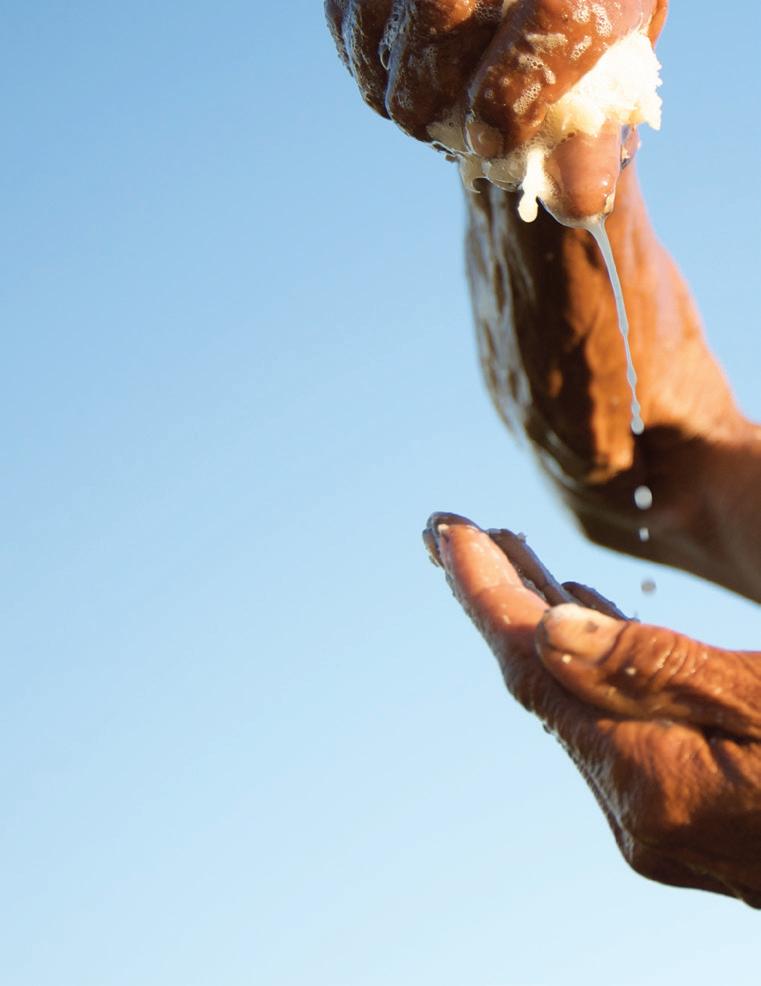
4 minute read
Facing the Challenge of Water Security in Namibia
Human access to potable water sources has come increasingly under threat during the past 50 years. The effect of climate change and the demand for water due to the global increase in populations, especially in arid areas, are two major causes. The unsustainable exploitation of scarce water resources, overuse, decrease in quality, wastage, poor effluent disposal and pollution compound the issue even more. The livelihood of hundreds of millions of people is, therefore, seriously at risk.

After three consecutive years of drought, the dams that supply water to the City of Cape Town in South Africa reached critically low levels and it was projected that the taps would run dry by April 2018 unless drastic steps were taken. The definition of ‘Day Zero’ as the day when the water sources would finally be depleted, made international headlines and is still fresh in the minds of many people all over the world. Fortunately, Day Zero could be avoided due to several water supply interventions and a huge effort to convince the public to reduce water consumption. The participation of the general public to achieve that objective and the rainfall that produced sufficient runoff into the dams during the winter of 2018 not only saved the day, but it served as a wake-up call for the need to manage the available water resources more judiciously and efficiently.
Namibia is the most arid country in sub-Saharan Africa and drought is a common phenomenon. Most of the country received below average rainfall since 2013, and rainfall during the main rainy season of 2019 was extremely poor countrywide. Many people in the rural areas practice subsistence farming, with stock and dryland crop cultivation to produce mahango (pearl millet) as their staple diet. It is estimated that more than 500,000 people are affected by the current drought. This number is expected to grow significantly until the next rainy season brings relief. On May 7th, 2019 the President of Namibia declared a state of emergency due to the deteriorating situation.
Water managers in Namibia had to face a similar challenge of increasing water scarcity in the City of Windhoek and the central area of the country as early as the late 1960s when the first signs of trouble emerged. At that time water was mainly supplied from local subterranean sources but that became unreliable for meeting the increasing demand. Additional water supply infrastructure was built to impound surface water runoff during the rainy season and the first reclamation plant was built to purify domestic wastewater to potable water quality standards. The future development of the water supply infrastructure was drawn up in a Master Water Plan which was presented in 1974 and has been implemented and extended in several phases over time as the demand increased and capital funds were made available. The final objective was to link a water carrier from the Okavango River to central Namibia.
But what are the solutions to the present water crisis?
Mr Piet Heyns, a civil engineer and former Head of the Department of Water Affairs and Forestry, who is now a freelance water engineering consultant, addressed some of the options at a recent meeting of the Namibia Scientific Society. The short and medium-term remedies for the current situation of reduced water security in the City of Windhoek and other urban areas in central Namibia are based on the implementation of five strategies. These consist of sinking additional boreholes into the Windhoek Aquifer, upgrading the water reclamation plant in Windhoek, drilling a number of additional boreholes into the Karst Aquifer in the Otavi Mountain land in the Grootfontein-Tsumeb-Otavi triangle, the general maintenance of the bulk water transfer system from the Karst area to the Von Bach Dam at Okahandja and increased efforts to achieve better water demand management.

Upgrading of the Windhoek Aquifer and the Karst Aquifer will each yield 12 million cubic metres of water per annum and the water reclamation plant will yield more than 7 million cubic metres per annum. The total cost of the envisaged projects will be more than N$3,4 billion.
Heyns told the meeting that the proposed extension of the Eastern National Water Carrier from Grootfontein to Rundu to channel water from the Okavango River to central Namibia will also be investigated and compared with other alternatives such as the supply of desalinated water from the coast to central Namibia, or a link from the recently investigated Ohangwena Aquifer to the Eastern National Water Carrier.
But providing more water to quench the ever increasing thirst of the City of Windhoek is not the only solution. It’s the responsibility of all residents to become more efficient by having water-wise gardens and using water-saving devices – before it’s too late. Namibian freelance journalist and travel writer: Willie Olivier









